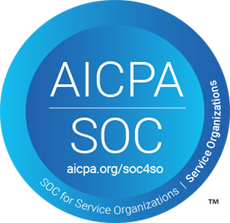For those who have not had to endure the unique challenges (and heartbreak) of hospice care, there may be some misconceptions about how much provider engagement is the norm. While the individual under the care of hospice providers is typically deemed terminal to qualify for that care, it doesn’t mean that healthcare collaboration is done, and providers are essentially hands off. In fact, the need for collaboration given the frailty, importance of pain management, and home-based care delivery that is the norm for hospice patients is on another level. We’ve advocated before that hospice patients should not be ignored in interoperability efforts, but with a shifting industry focus to Home Health Services (which is a great thing), we’ve got to consider how these providers in less traditional care settings can connect and care for patients via efficient, optimized means.
Hospice Providers Need Access to Flexible Communication Channels
Yet another myth about hospice providers is that they’re stuck in the stone age with paper and pencil as their tools of choice. Solutions like Complia facilitate exchange of electronic patient records and documentation within the post-acute space. So while technology exists to support the unique needs and facets of hospice care, the ability to exchange that information is largely dependent on the availability of other providers – be it hospitals, ED, or other specialists involved in preserving quality of life – to easily and willingly communicate. (Willingness is key here.) Point-to-point integrations will never make sense given the scale and nature of hospice providers, generally independent from largely funded health systems and hospital networks. Capturing electronic records is one thing…being able to securely send and receive records to other providers is another.
It must be a two-way street to keep front-line providers, working in the patient home or facility, in contact with the greater care team. Things with hospice patients can turn quickly, so the ability to communicate real-time, referencing up-to-date medical information like medication lists and vitals, is absolutely vital (pun intended) to preserve end of life wishes and ease the additional burden on caregivers. (Spoiler alert: when caring for a dying loved one, the last thing you want to deal with is haphazard communication and confused care teams.)
Home Health and Hospice Care Doesn’t Just Happen Between Normal Business Hours
The reality of delivering care to patients in homes or in facilities at the end of their lives is that it’s not a 9-to-5 kind of deal. Not only could the need surface at any moment, but care is inherently “on the go.” Providers may or may not have Wi-Fi. They may or may not be relying on communication from their smartphones at best. The ability to connect with a member of the care team could be the difference from an abrupt change of condition to maintaining final wishes and peaceful pace.
Giving home health providers effective connectivity to advocate for their patients not only reduces complications and saves costs, but it boosts morale for care teams that are inherently dealing with some of the most daunting, heartbreaking conditions in the field.







